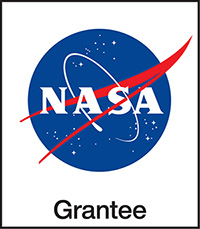Level Up! (Optional)
In the Educator Guide, you will see “Level Up!” Sections. These include great tips and activities that build and extend STEM and 21st Century skills, and create stronger connections between educators, youth, and families. They typically take a little extra time, so please plan accordingly.
- Have learners build a model of the environment they choose (using craft supplies, Legos, etc.) to help them think about how the parts of that environment might be connected. (30 min.)
- Have learners research a real-world context where water filtration and reuse is important. It can be a location on Earth, like their own community or a community with limited or contaminated water, or another NASA mission, such as Artemis. (30 min.)
- Allow learners to come up with an environment of their own. To help learners think about locations in their community that use water, have them refer to the cards on the Our Ideas poster. As needed, help them think about different water sources for a given location. For example, a farm may have a sink for farmers to use, water for livestock to drink, and water for crops; a community center may have a swimming pool, showers, and a vegetable garden. When formulating new water samples for use with the new environment, use ingredients that will show up on the tests. For example, diffuser oil or scented tea can be smelled; dirt, grass, or sticks have texture; and detergent changes the pH. (20 min.)
- If learners want more information about the different environments, you can share the following:
- The surface of Mars is almost completely dry. There are reservoirs of ice in the north and south polar caps and under the surface in some regions.
- Ocean water is not usable to sailors on most ships. The Navy is working with NASA to improve its ability to use and reuse ocean water for human activities. (5 min.)
- Ask this story prompt question: Can you tell me a story about something you’ve designed in the past? (Possible responses include designing objects, systems, or processes.) Have learners share with a partner (note that the sharing can take forms other than speaking aloud). (20 min.)
- Tell learners, if anyone asks them what they did today, they can tell them, “We designed a process to filter and reuse water.” (5 min.)
- Invite a family or community member to come in as a special guest and share their knowledge about water-related topics. (45 min.)
- Ask: Which steps of the Engineering Design Process did you use today? (We planned, created, and tested our processes for reusing water.) (5 min.)

